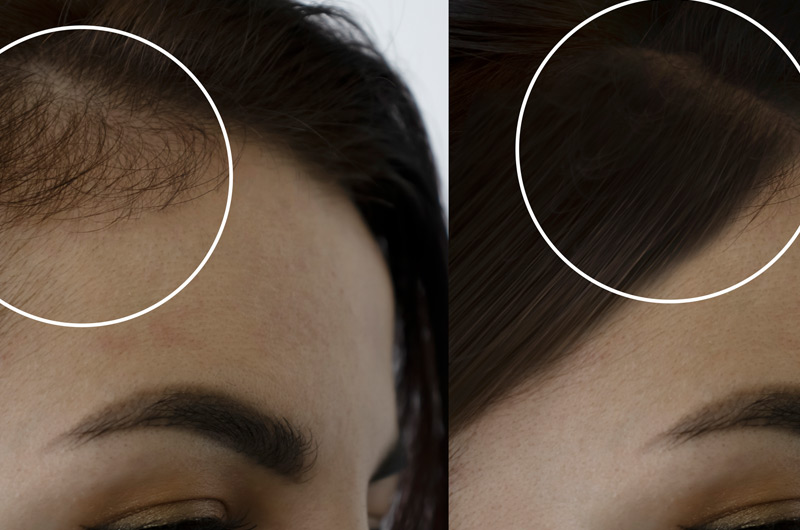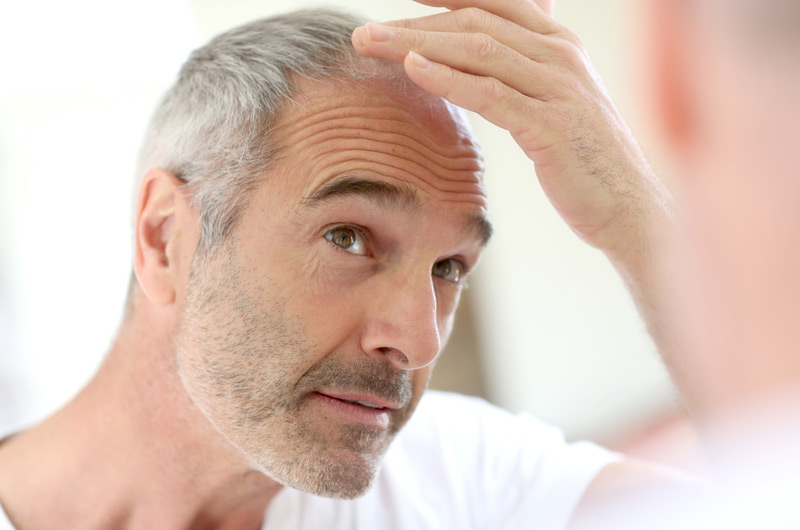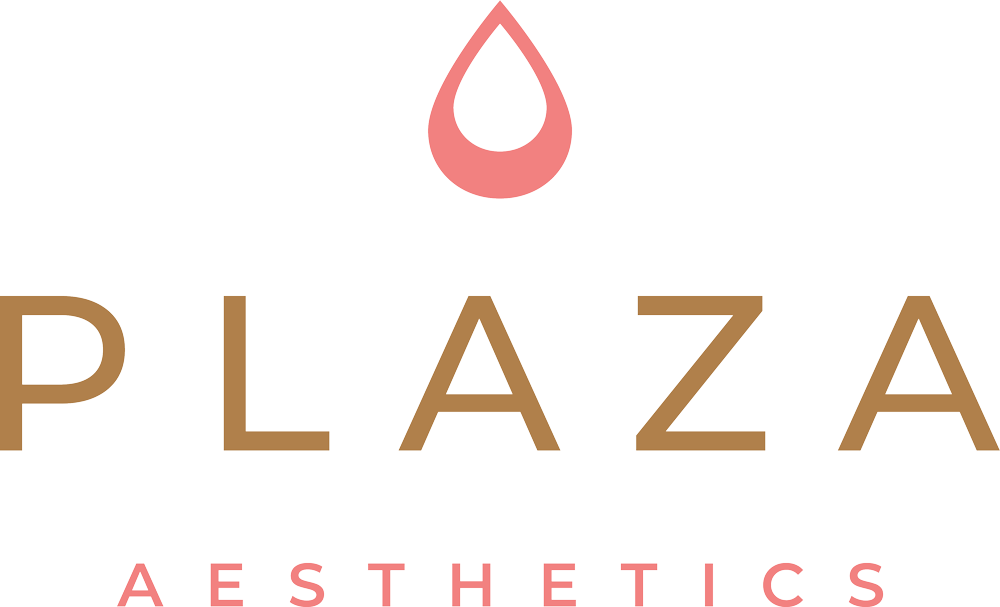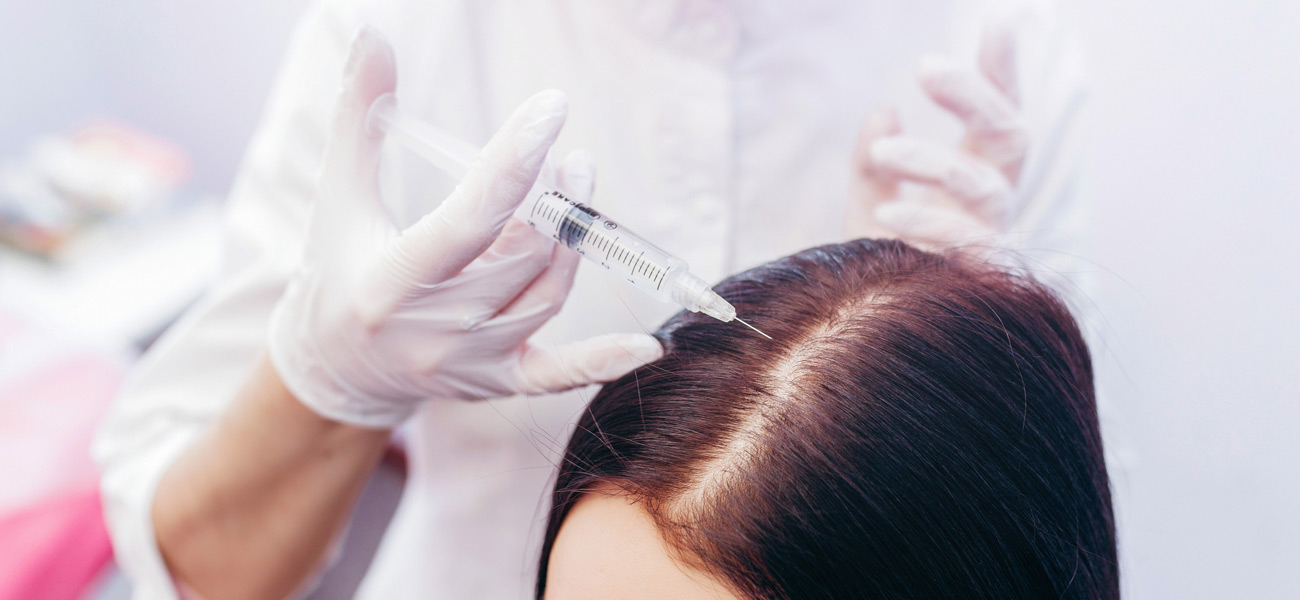PRP Hair Restoration is a treatment that involves injecting platelet-rich plasma (PRP) into the scalp to promote hair growth.
Symptoms of Hair Loss
Patients experiencing hair loss may have the following signs:
- Receding hairline
- Gradual thinning of hair on top of the head
- Broadening of the part in their hair
- Circular or patchy bald spots
- Sudden loss of hair in clumps
- Full-body hair loss
- Patches of scaling across the scalp
Causes of Hair Loss
Hair loss may be hereditary or it may be caused by hormonal changes and medical conditions, such as alopecia areata, scalp infections, and trichotillomania.
Other causes of hair loss include:
- Medications and supplements (such as those used to treat cancer, arthritis, depression, heart problems, gout, and high blood pressure)
- Radiation therapy to the head
- Stressful events
- Hairstyles and treatments


Risk Factors For Hair Loss
Certain individuals may be at increased risk of hair loss if they:
- Have a family history of balding
- Are older
- Have experienced significant weight loss
- Are living with diabetes and lupus
- Are experiencing high levels of stress
- Have poor nutrition
What is PRP?
Platelet-rich plasma contains plasma, which is the liquid portion of blood, and platelets, which are a type of blood cell that supports healing and blood clotting. Platelets contain growth factors that trigger cell growth and stimulate tissue regeneration in the treatment area. PRP contains a higher concentration of platelets than typically found in blood.
Who is a Candidate For PRP Hair Restoration?
PRP Hair Restoration is an effective treatment for patients experiencing the early stages of hair loss. Patients should have detectable hair follicles in the treatment area to ensure visible results. PRP treatment cannot stimulate hair growth in areas that are completely bald.
To qualify for treatment, patients should:
- Not be taking blood thinners
- Not be heavy smokers
- Not have a history of alcohol or drug misuse
Treatment may not be recommended for patients diagnosed with the following medical conditions:
- Acute or chronic infections
- Cancer
- Chronic liver disease
- Chronic skin disease
- Hemodynamic instability
- Hypofibrinogenemia
- Metabolic disorder
- Platelet dysfunction syndromes
- Systemic disorder
- Sepsis
- Low platelet count
- Thyroid disease
Benefits of PRP Hair Restoration
Compared to other hair loss treatments, PRP hair restoration offers the following benefits:
- Reduced risk of infection
- Minimally-invasive, or non-surgical
- No downtime
- Results visible after one treatment session
What to Expect During Treatment
A Plaza Aesthetics specialist will begin by cleansing the patient’s arm and go on to draw blood that will be placed into a centrifuge, which is a machine that separates the various fluids in the blood.
The platelet-rich plasma will be drawn up into a syringe and then injected into the areas of the scalp showing signs of hair loss.
Patients will typically need three treatments spaced four to six weeks apart, as well as maintenance treatments every four to six months
Potential Risks And Side Effects
Because the patient’s own blood is injected into their scalp, there’s no risk of infection. However, other potential side effects of the procedure include injury to blood vessels or nerves, infection, formation of scar tissue, and calcification at the injection sites.

